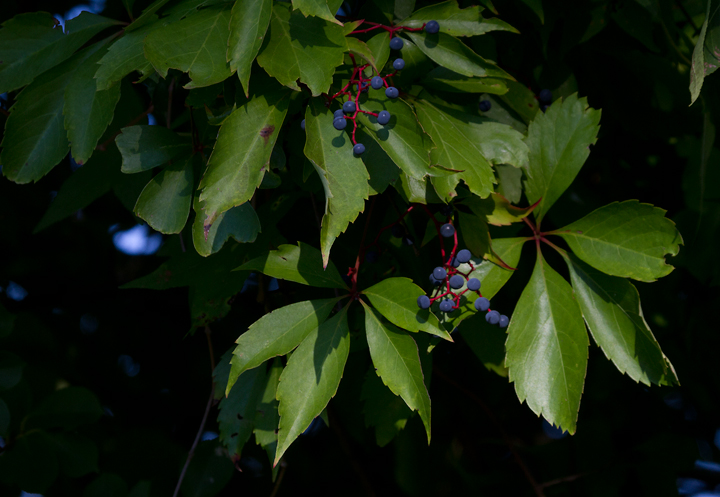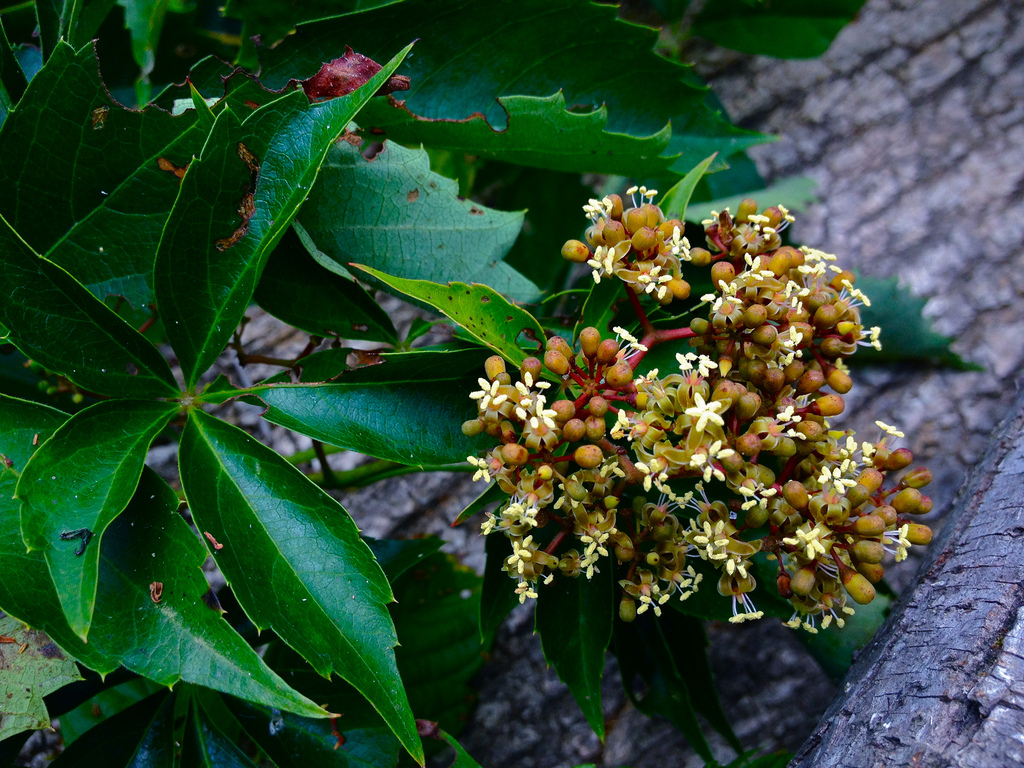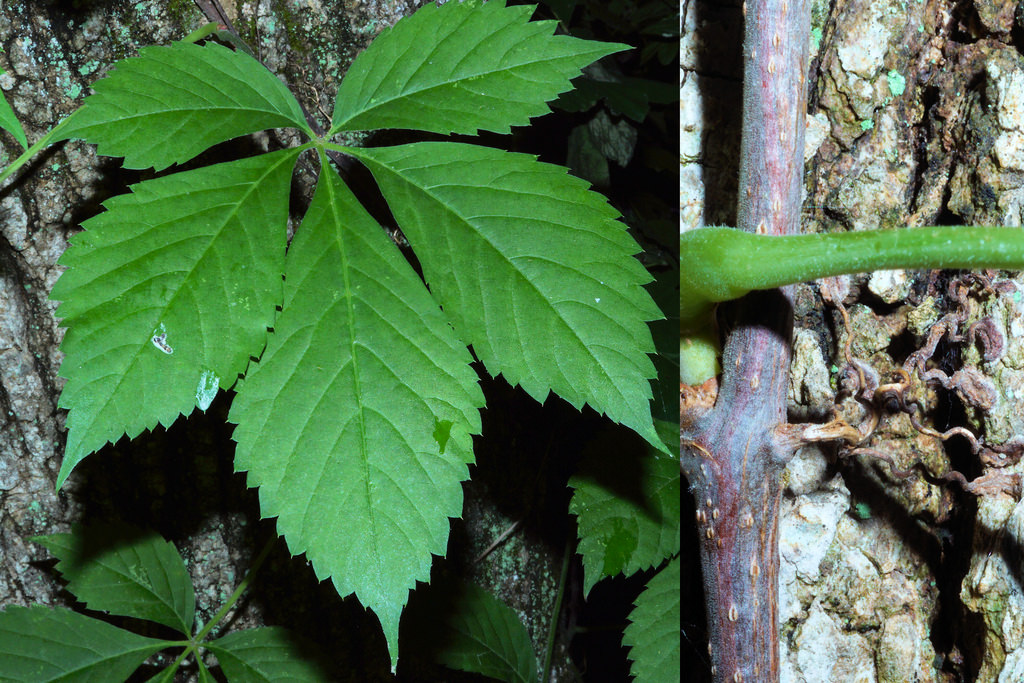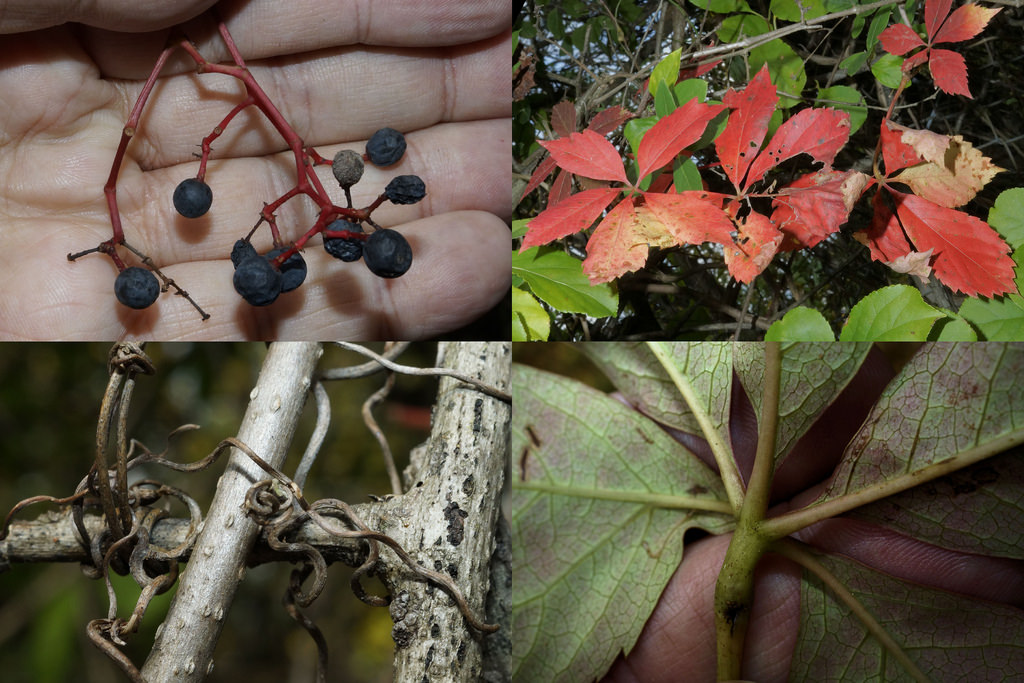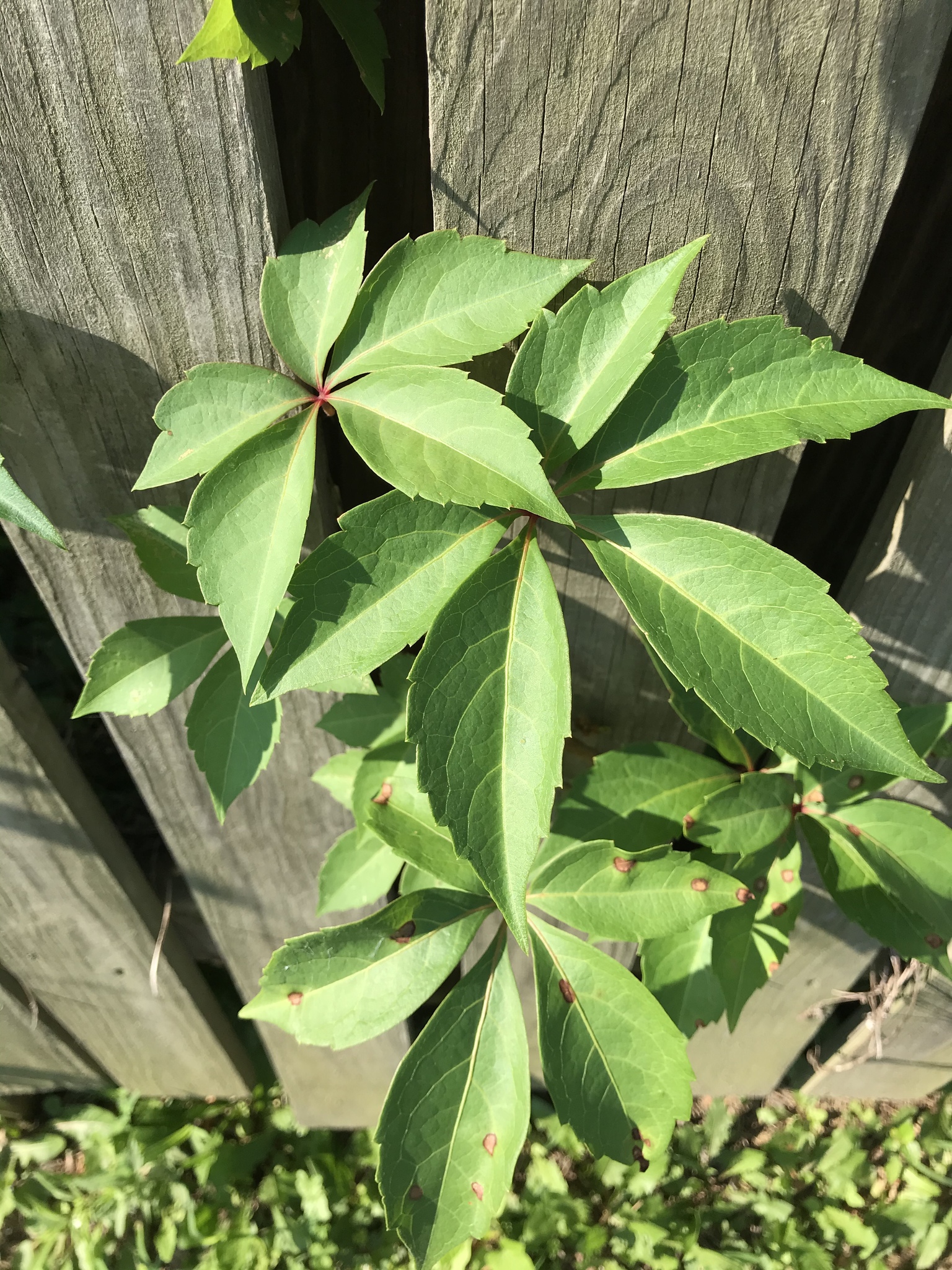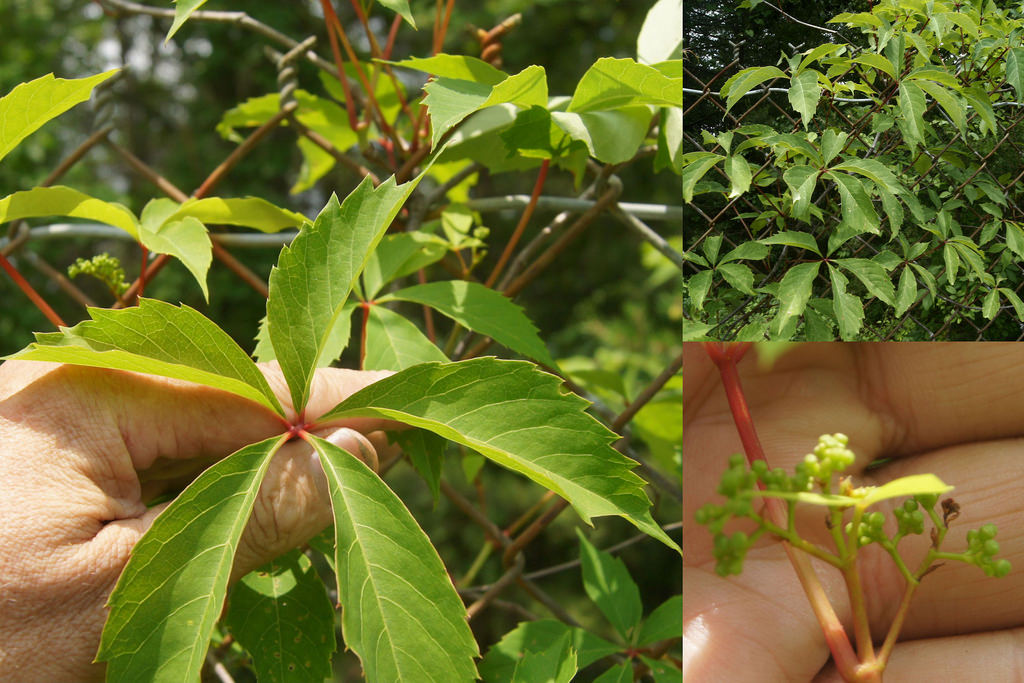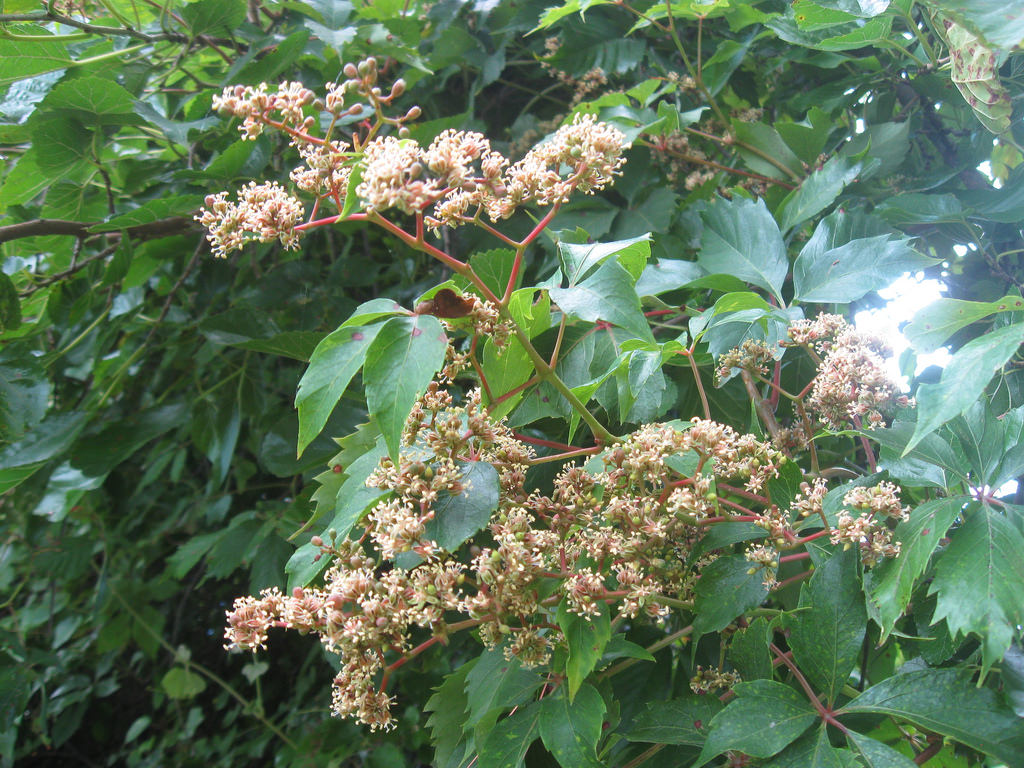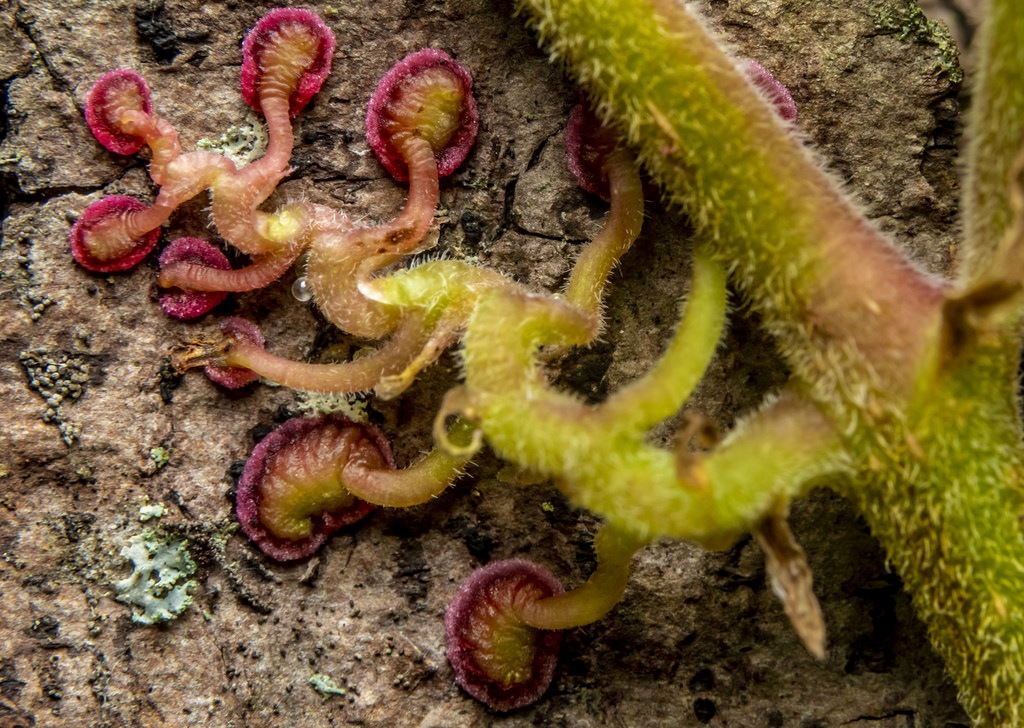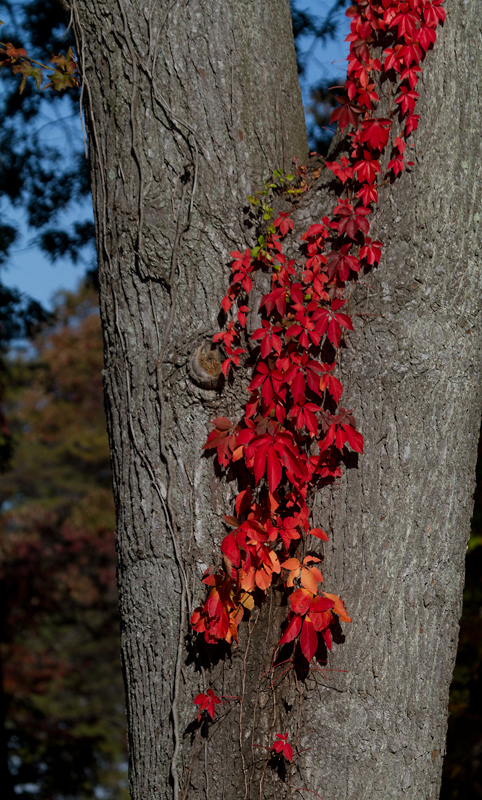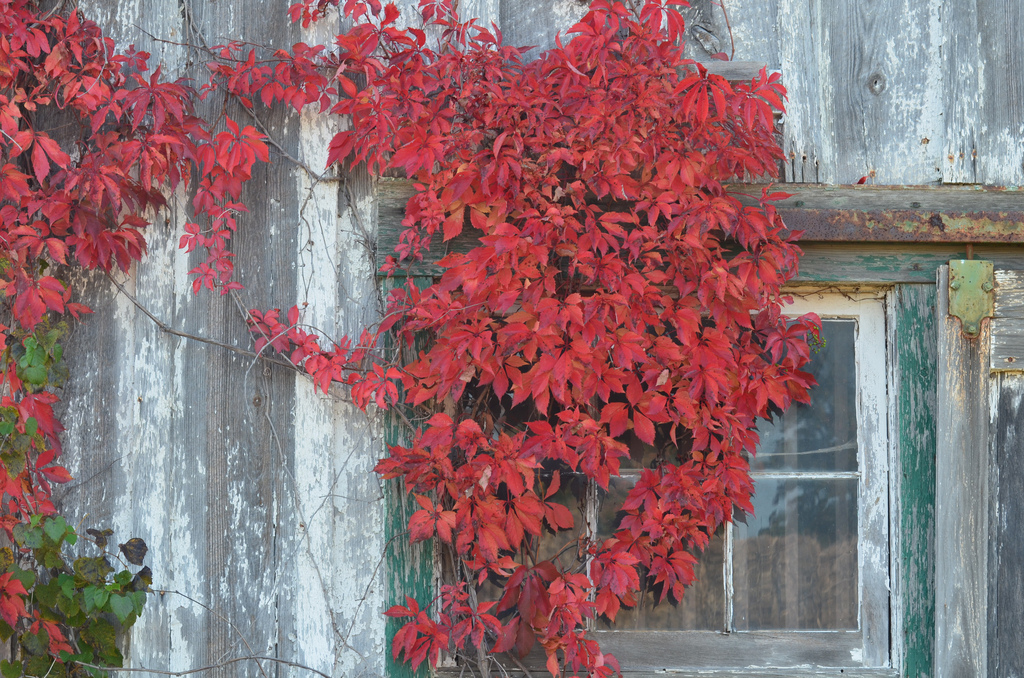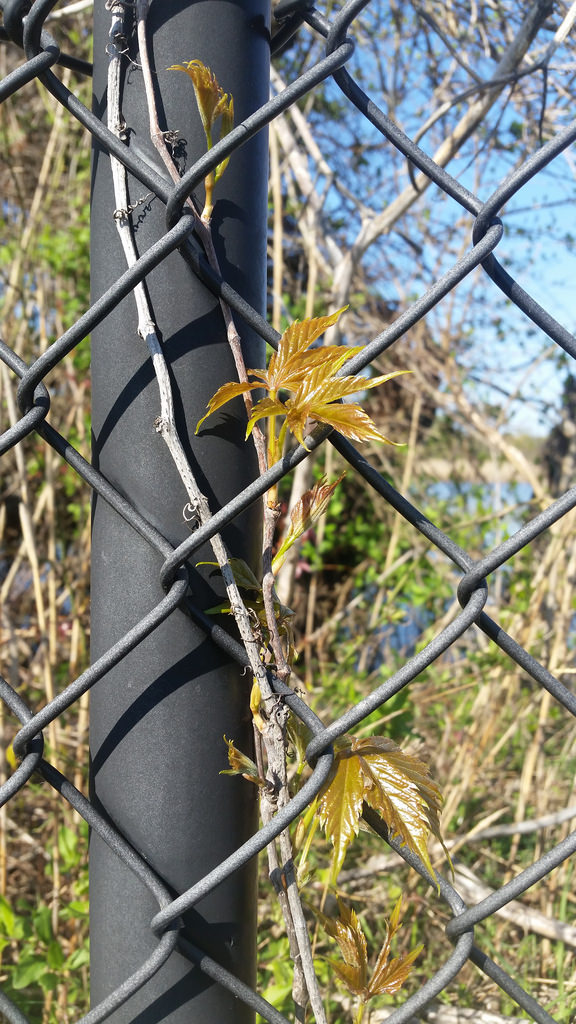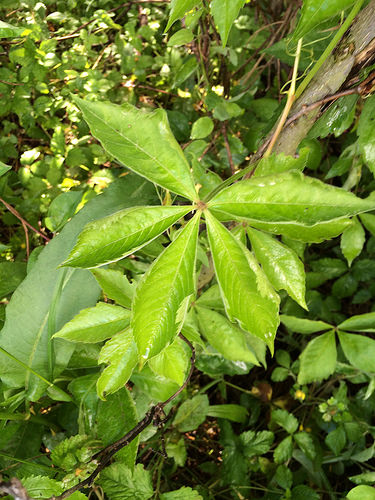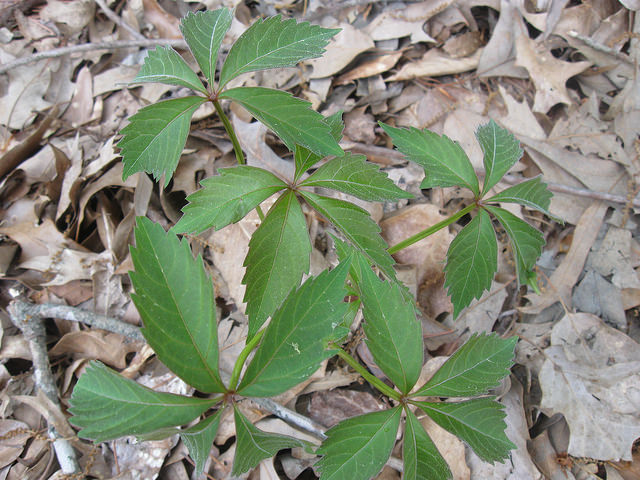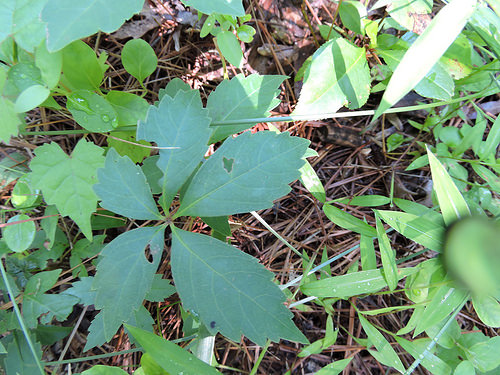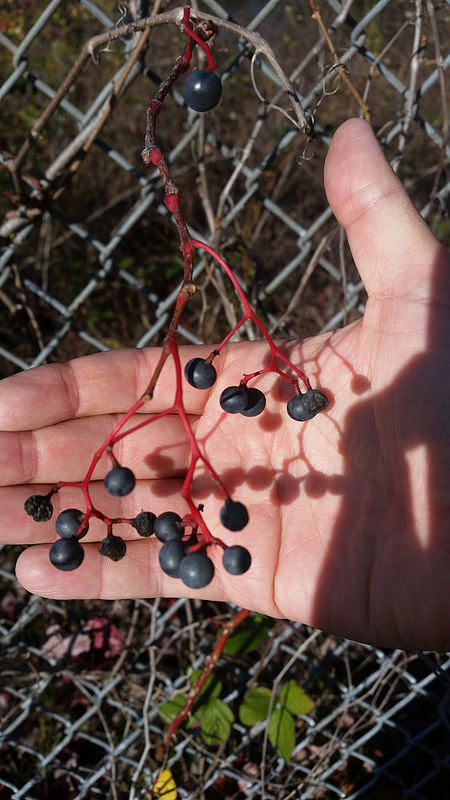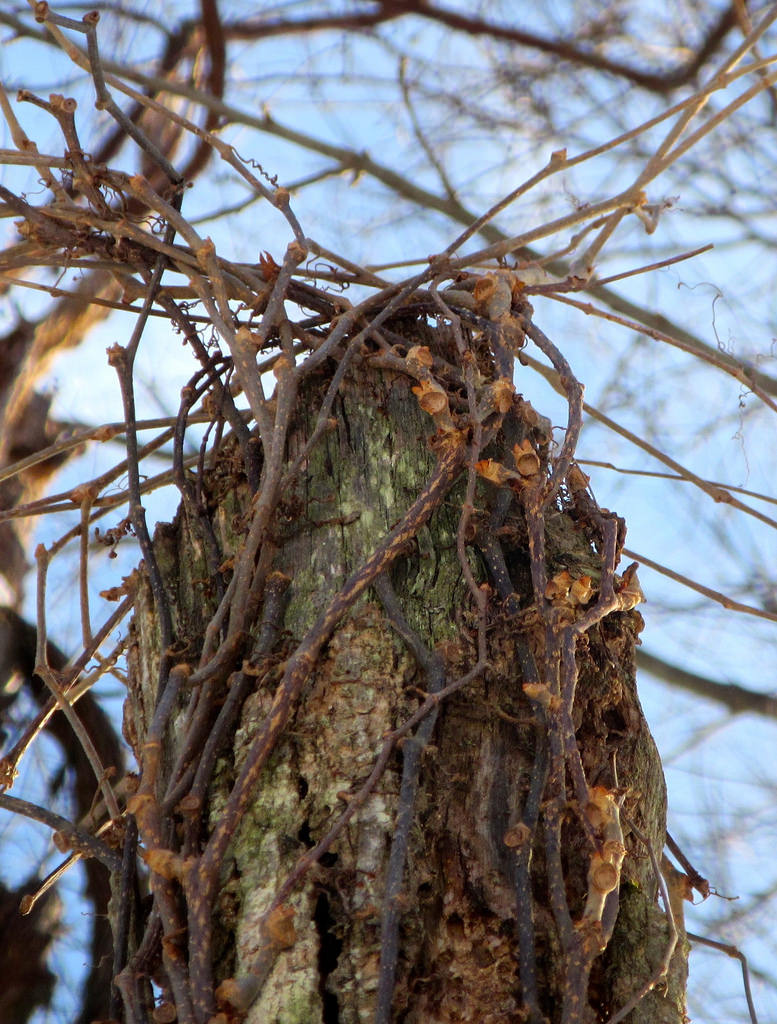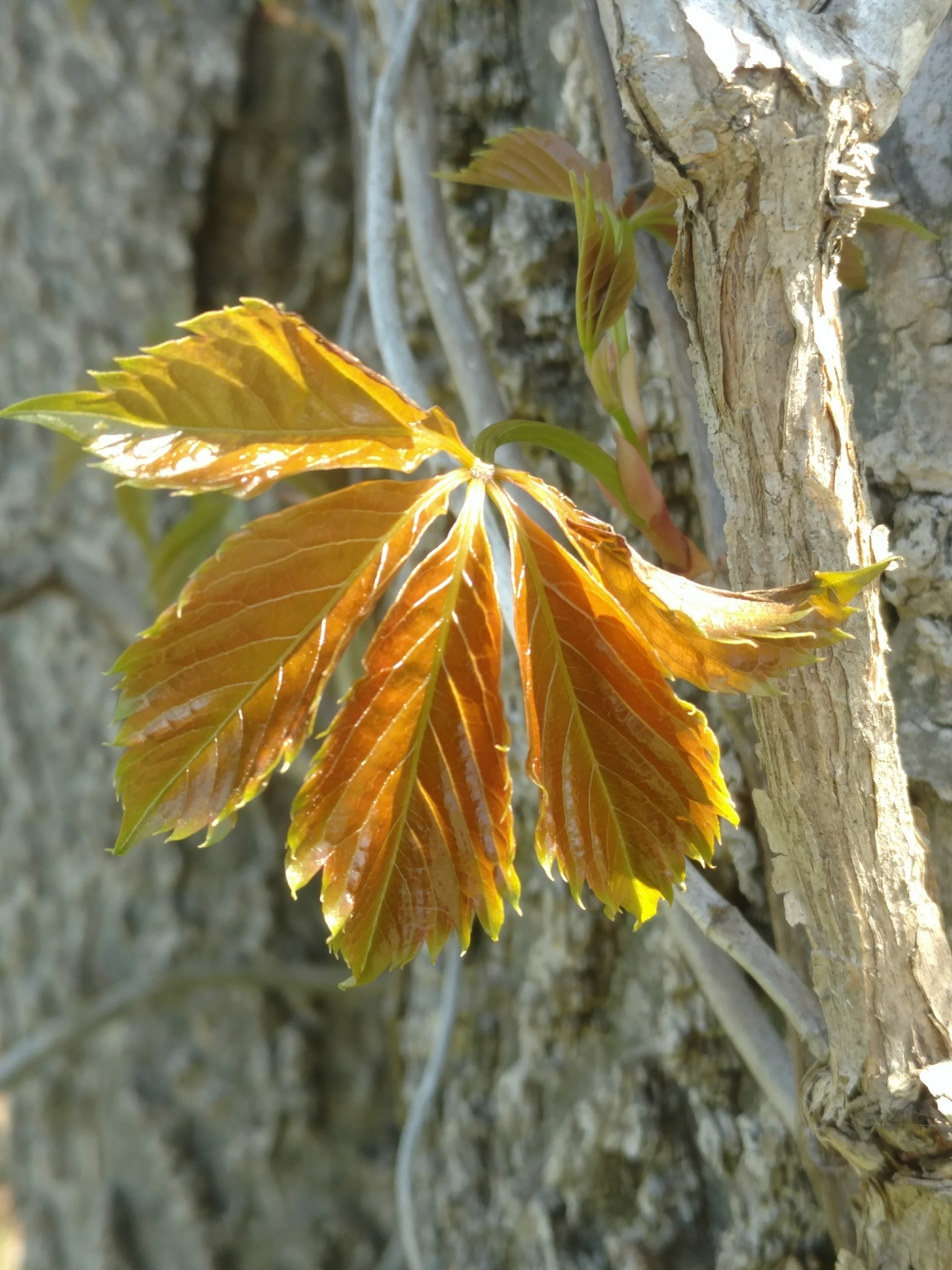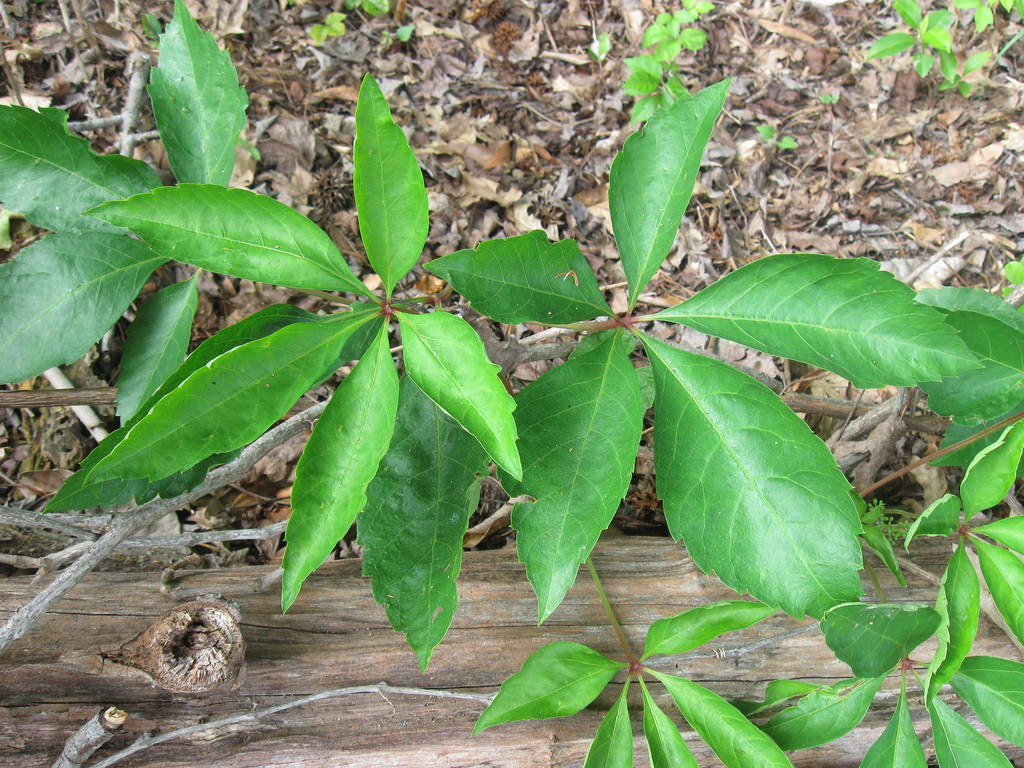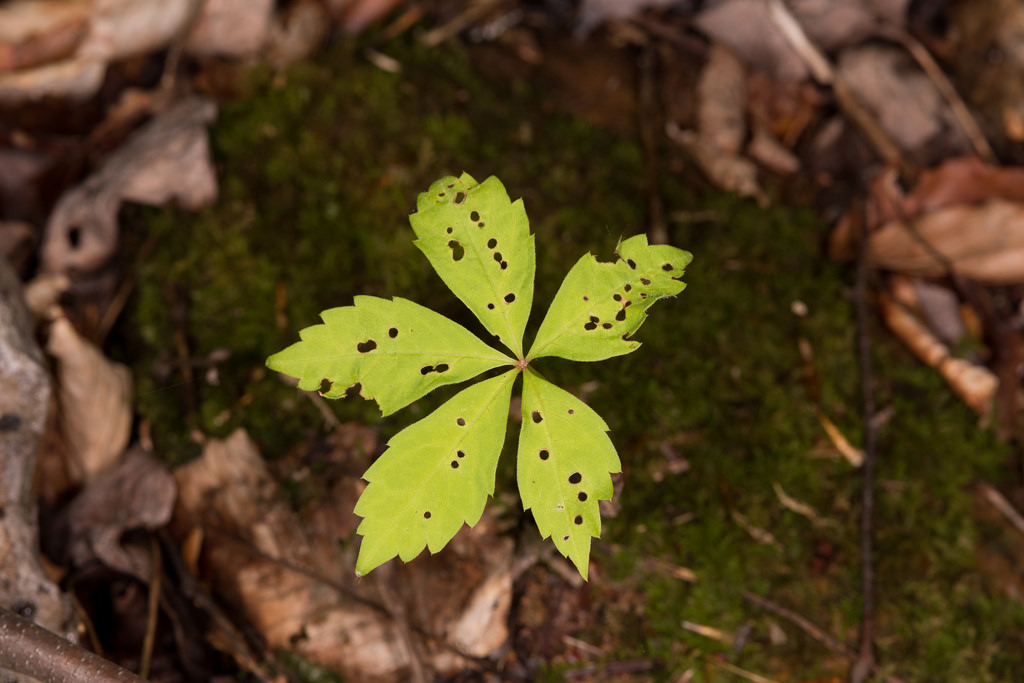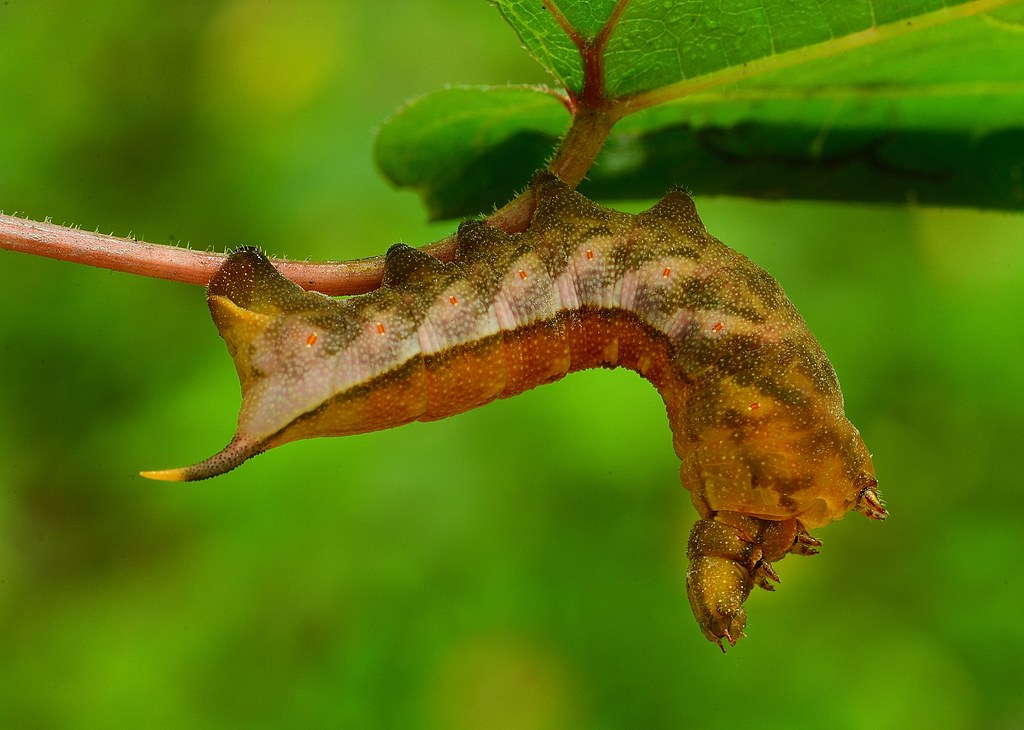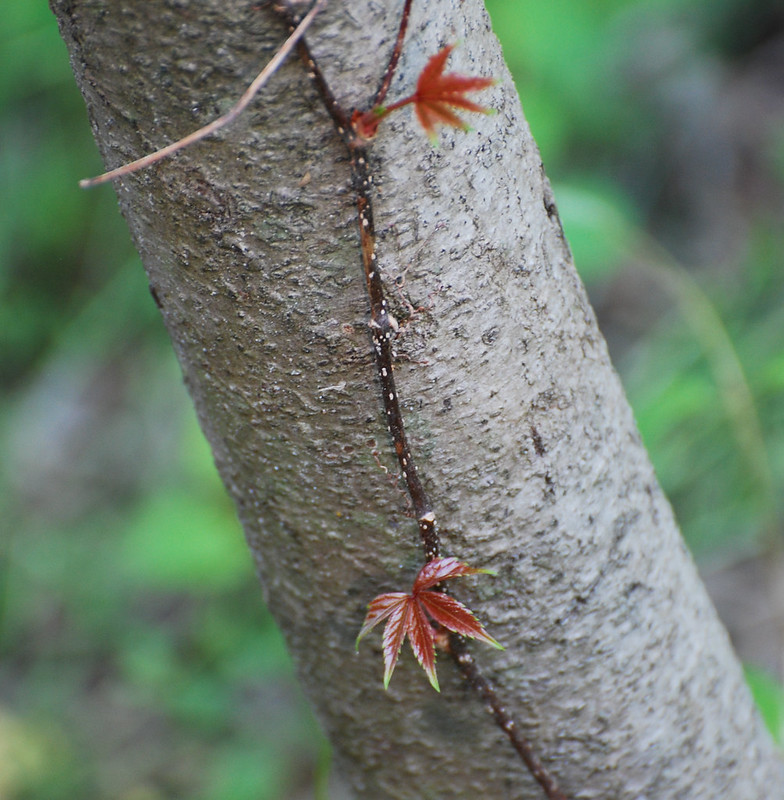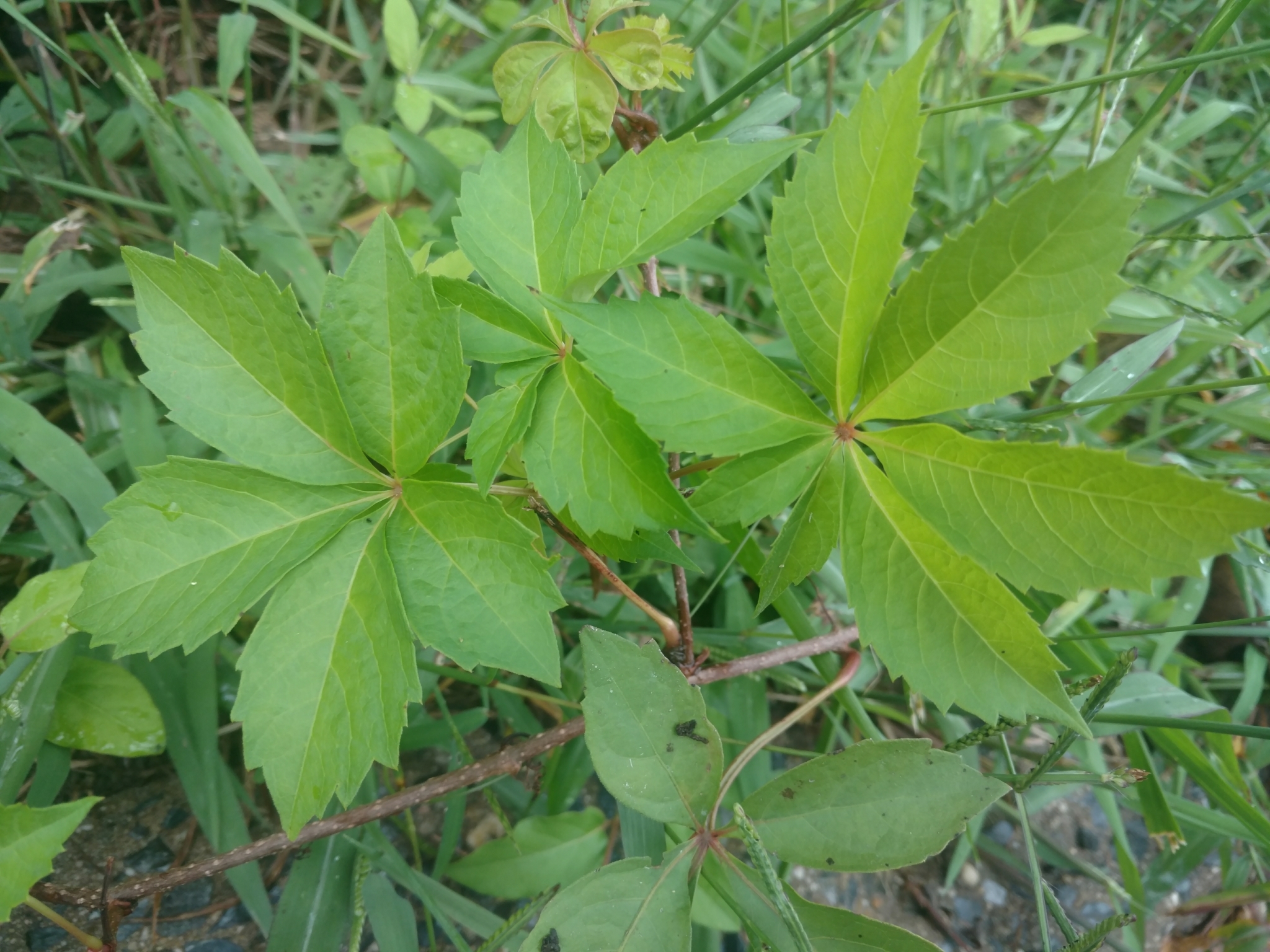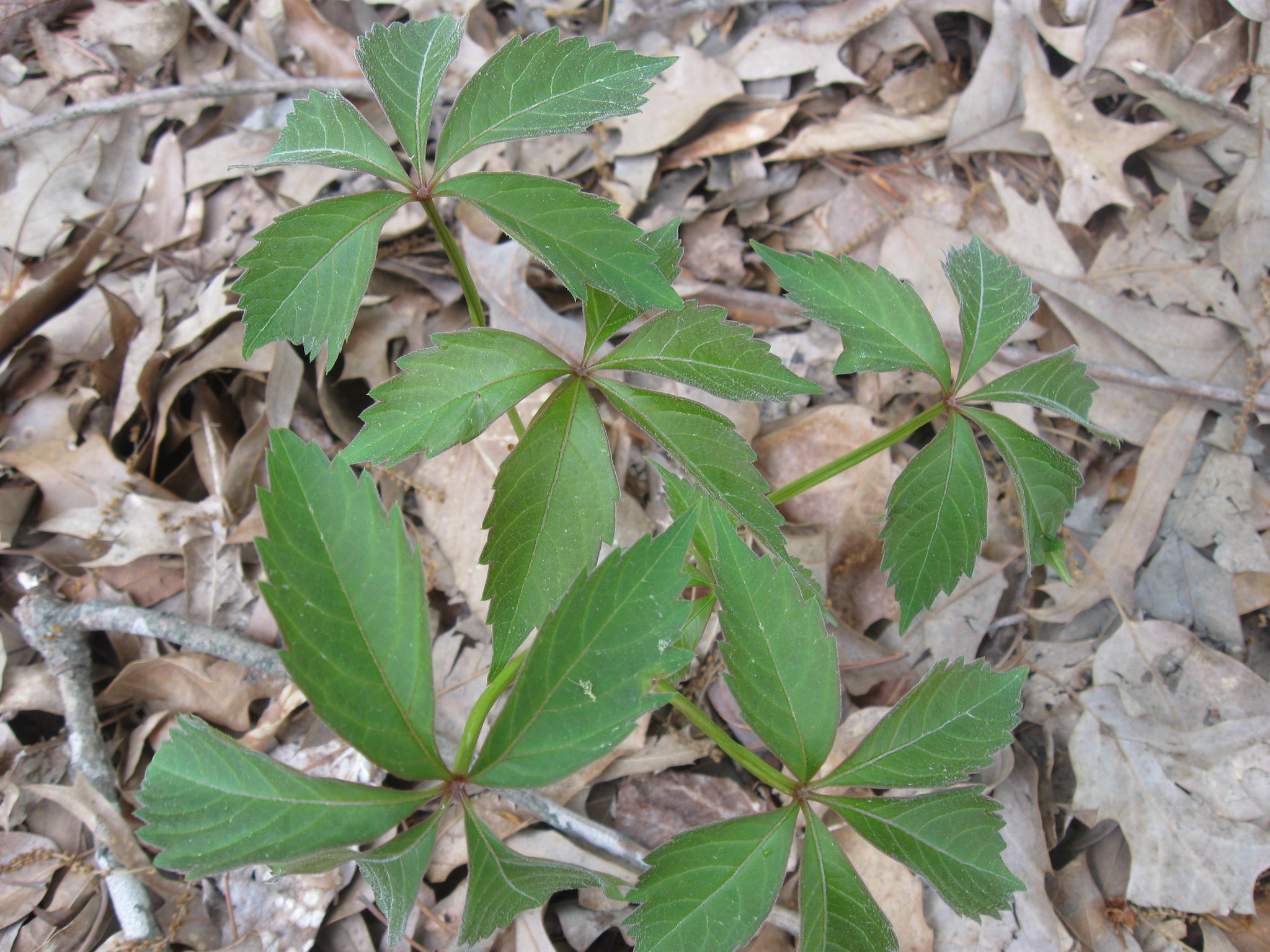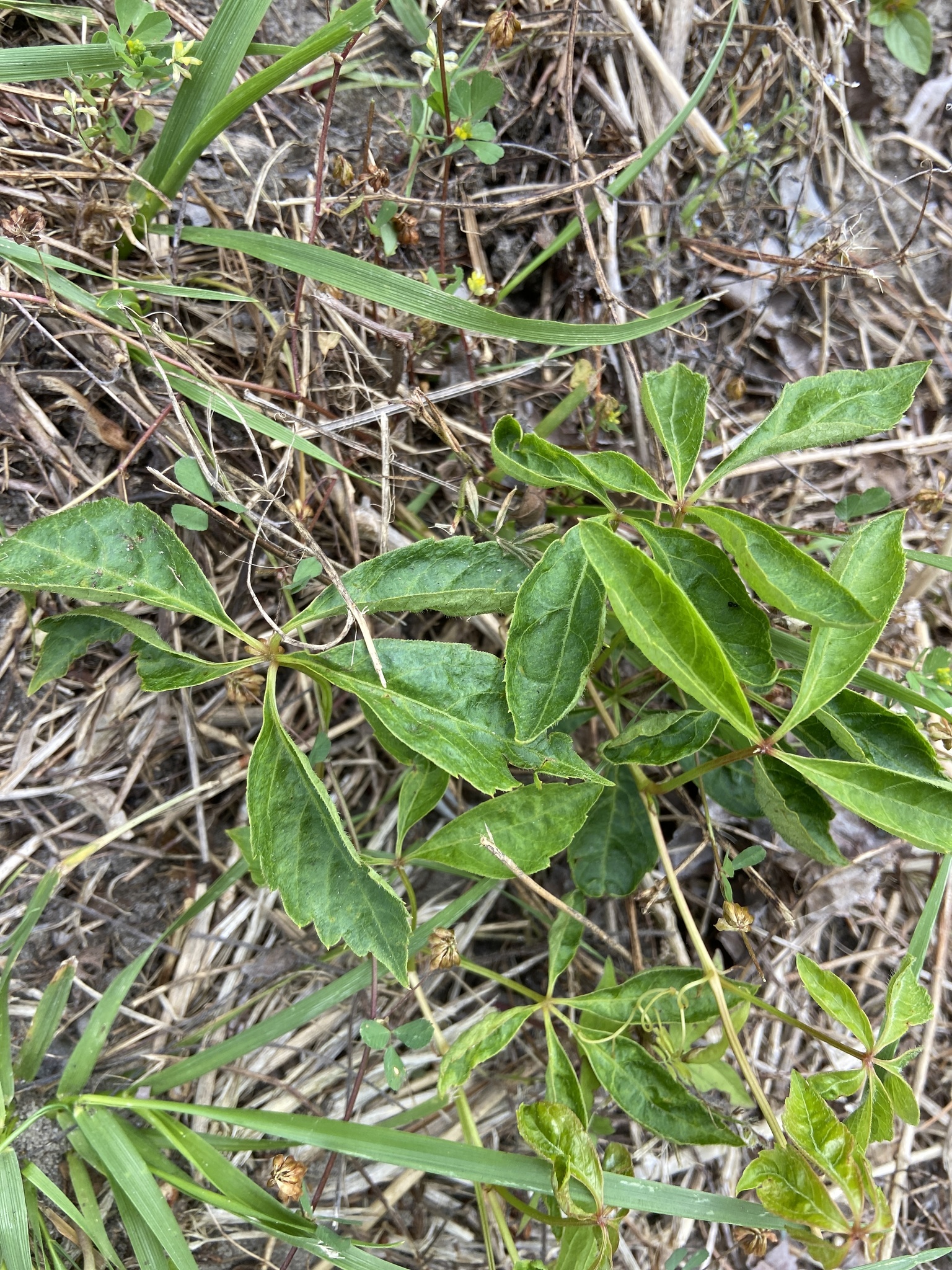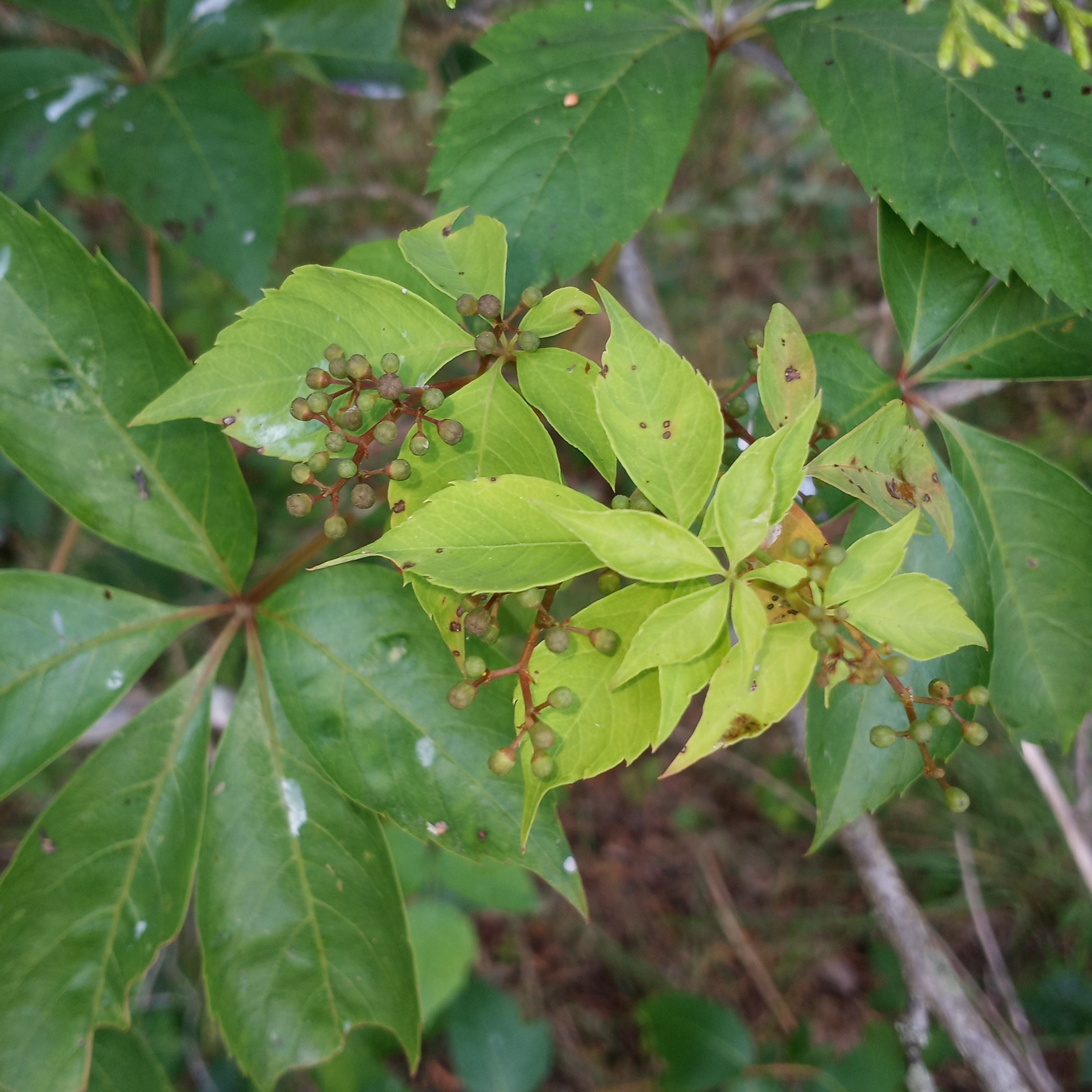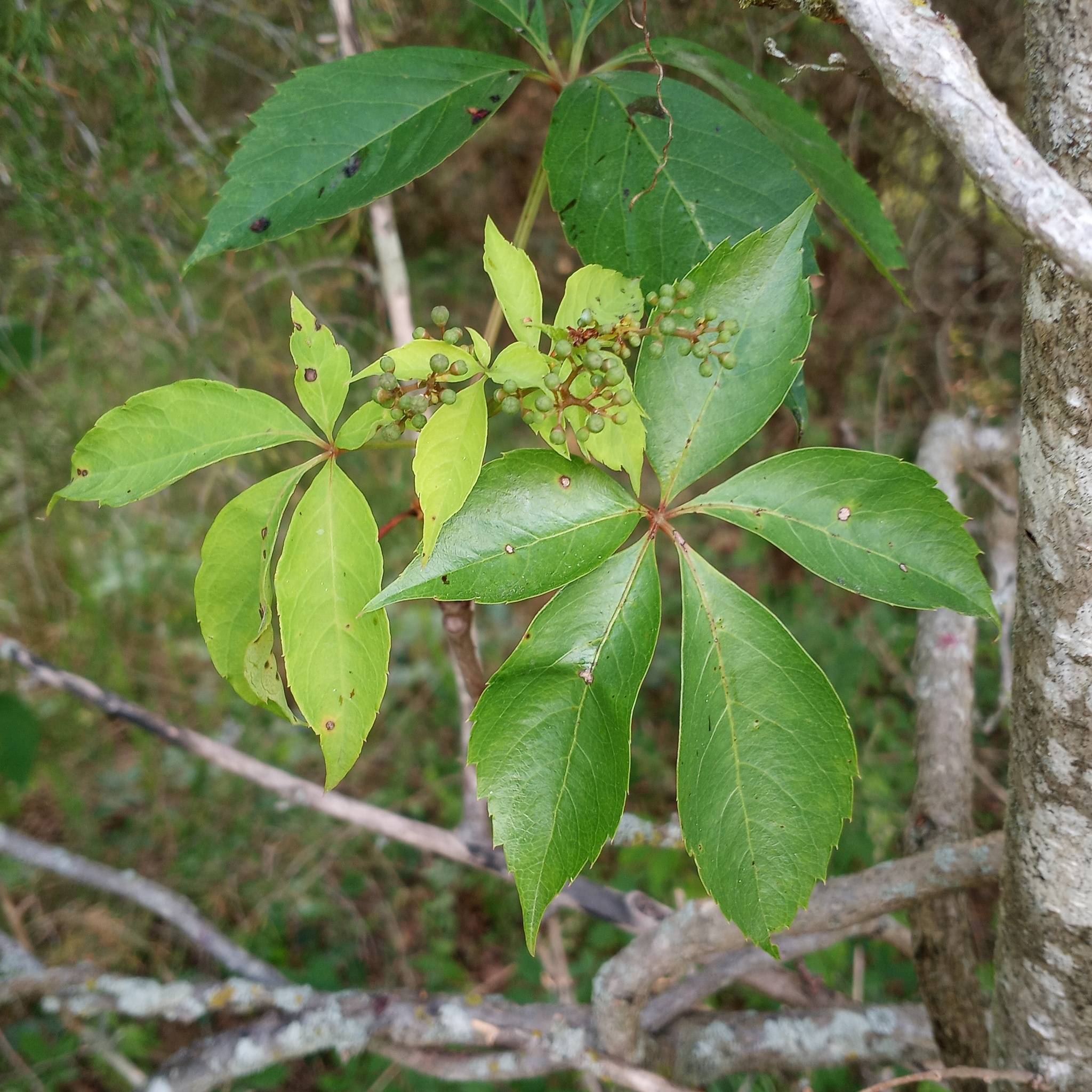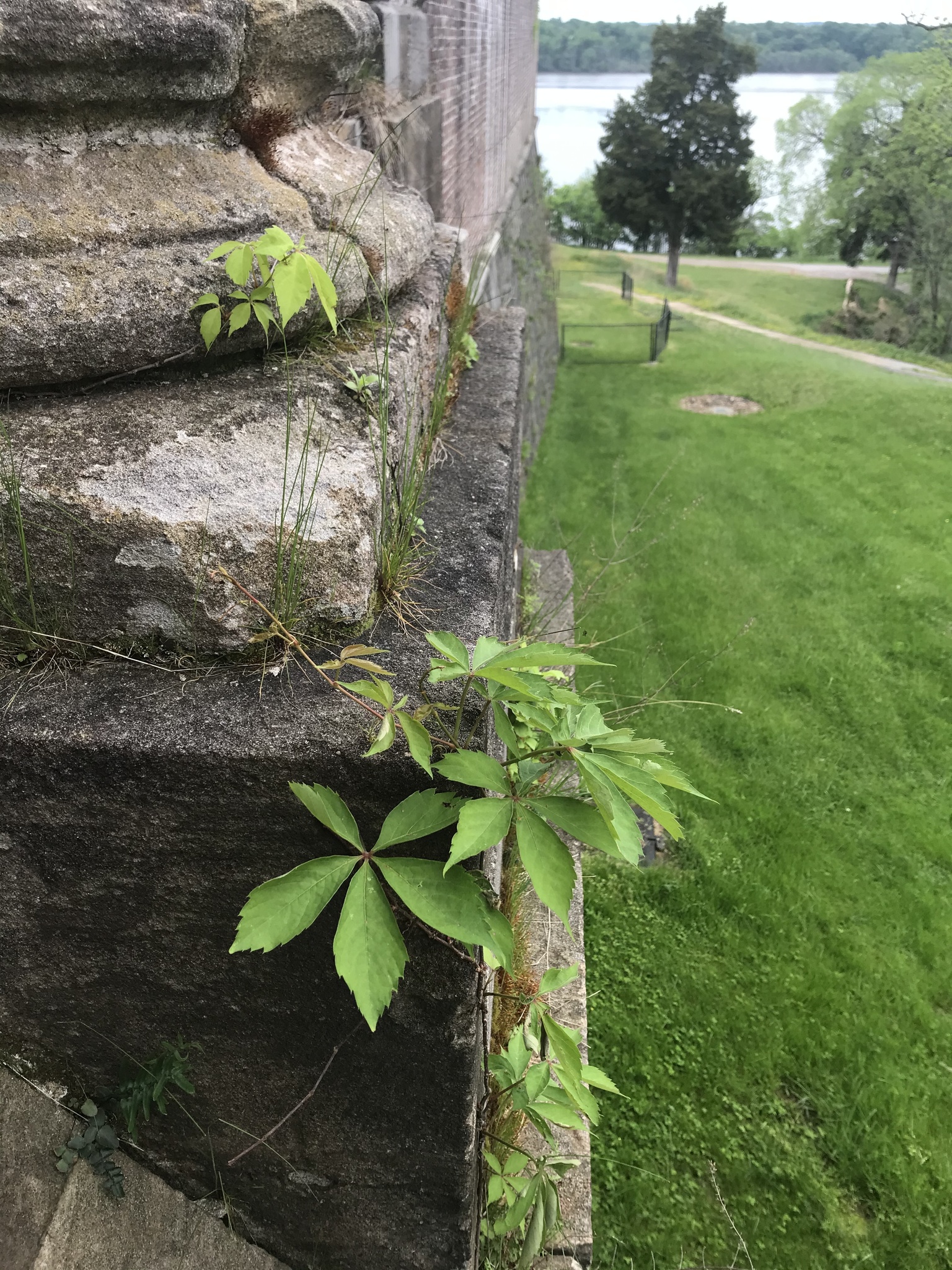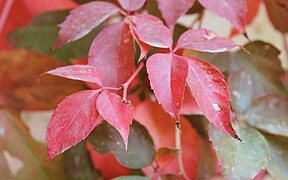Map Snapshot

























1,362 Records
Status
A high-climbing, native vine that occurs throughout the eastern United States.
Description
Leaves and buds of Virginia Creeper are alternate, with branched tendrils opposite each leaf or bud. Each node of the stem has tendrils on only one side; since Virginia Creeper has alternate leaves, the tendrils are also alternate, with each set of tendrils opposite a leaf, or, in winter, a leaf bud. The tips of the tendrils usually have adhesive disks that hold the vine to the tree, shrub, or other structure it is climbing. The leaves are compound, with 5, sometimes 3, leaflets that turn bright red in autumn. Berries blue to black, on red stalks. Virginia Creeper can be an aggressive vine, overgrowing trees at times, but because it climbs by tendrils rather than by twining, it does not strangle its host trees, as do some non-native vines, such as Oriental Bittersweet.
Where To Find
Virginia Creeper occurs throughout Maryland. It is common in the western two-thirds of the state (Brown and Brown, 1972).
Relationships
The leaves are host to larvae of Lettered Sphinx, Pandorus Sphinx, and Virginia Creeper Sphinx. Larvae of Virginia Creeper Clearwing bore into the roots.
The berries of Virginia Creeper are eaten by many wildlife species, especially birds, but are toxic to humans.
Seasonality Snapshot
Source: Wikipedia
| Virginia creeper | |
|---|---|

| |
| Scientific classification | |
| Kingdom: | Plantae |
| Clade: | Tracheophytes |
| Clade: | Angiosperms |
| Clade: | Eudicots |
| Clade: | Rosids |
| Order: | Vitales |
| Family: | Vitaceae |
| Genus: | Parthenocissus |
| Species: | P. quinquefolia
|
| Binomial name | |
| Parthenocissus quinquefolia | |
| Synonyms | |
|
Ampelopsis hederacea Ehrh.[1] | |
Parthenocissus quinquefolia, known as Virginia creeper, Victoria creeper, five-leaved ivy, or five-finger, is a species of flowering vine in the grape family, Vitaceae. It is native to eastern and central North America, from southeastern Canada and the eastern United States west to Manitoba and Utah, and south to eastern Mexico and Guatemala.
Etymology
[edit]"Parthenocissus" is derived from Greek and means "virgin ivy".[2] "Quinquefolia" means "five-leaved". "Quinque" – "five" and "folia" – "foliage", "leaves".[2]
Names
[edit]The name "Virginia creeper", referring to one of its native locations, is also used for the whole genus Parthenocissus, and for other species within the genus. The name Parthenocissus is from the Greek literally meaning "virgin ivy", and may derive from the common English name of this species.[3] It is not closely related to the true ivy, Hedera. The specific epithet quinquefolia means "five-leaved", referring to the leaflets on each compound (palmate) leaf.[4]
This plant is also known in North America as woodbine,[5] although woodbine can refer to other plant species.
Description
[edit]
Parthenocissus quinquefolia is a prolific deciduous climber, reaching heights of 20–30 m (70–100 ft) in the wild. It climbs smooth surfaces using small forked tendrils tipped with small strongly adhesive pads 5 mm (3⁄16 in) in size.[6]
Leaves
[edit]The leaves are palmately compound, composed of five leaflets (rarely three leaflets, particularly on younger vines, and sometimes seven) joined from a central point on the leafstalk, and range from 3 to 20 cm (1 to 8 in) (rarely to 30 cm or 12 in) across. The leaflets have a toothed margin. Seedlings have heart-shaped cotyledon leaves. The species is often confused with P. vitacea or "False Virginia creeper", which has the same leaves, but does not have the adhesive pads at the end of its tendrils.
It is sometimes mistaken for Toxicodendron radicans (poison ivy), despite having five leaflets (poison ivy has three).[7] While the leaves of P. quinquefolia do not produce urushiol, the sap within the leaves and stem contains raphides (needle-shaped crystals of calcium oxalate) which can puncture the skin causing irritation and blisters in sensitive people.[8]
The leaves sometimes turn a decorative bright red in the fall.
Flowers and berries
[edit]The flowers are small and greenish, produced in inconspicuous clusters in late spring, and mature in late summer or early fall into small hard purplish-black berries 5 to 7 mm (3⁄16 to 1⁄4 in) diameter. These berries contain toxic amounts of oxalic acid and have been known to cause kidney damage and death to humans.[9][10][8] The berries are not toxic to birds and provide an important winter food source for many bird species.
Cultivation and uses
[edit]
Parthenocissus quinquefolia is grown as an ornamental plant, because of its ability to rapidly cover walls and buildings, and its deep red to burgundy fall (autumn) foliage.[11] It can easily be propagated by stem cuttings taken in spring.[12]
It is frequently seen covering telephone poles or trees. It may kill other plants it covers by shading its support and thus limiting the supporting plants' ability to photosynthesize. With its aggressive growth, it can overburden slower-growing understory trees with its weight, damaging them. Its ability to propagate via its extensive root system makes it difficult to eradicate.[13][14]
In the UK, this plant is listed on Schedule 9 of the Wildlife and Countryside Act 1981 as an invasive non-native species. While this does not prevent it from being sold in the UK, or from being grown in gardens, the Royal Horticultural Society (RHS) encourages those that do grow it to take great care with managing it and with disposing of unwanted material. The RHS also encourages gardeners to find alternative plants to grow to those listed on Schedule 9.[15]
Parthenocissus quinquefolia can be used as a shading vine for buildings on masonry walls. Because the vine, like its relative P. tricuspidata (Boston ivy), adheres to the surface by disks rather than penetrating roots, it does not harm the masonry but will keep a building cooler by shading the wall surface during the summer. As with ivy, ripping the plant from the wall will leave the adhesive disks behind. If the plant clings to fragile surfaces it can first be killed by severing the vine from the root. The adhesive pads will then eventually deteriorate and release their grip.
The plant should be trimmed regularly to keep it from growing into areas where it is not wanted. If allowed to penetrate into the wall of a frame house, it will grow upward within the wall until it finds a place to emerge.[16][17]
See also
[edit]- Thicket Creeper or False Virginia creeper (P. inserta or P. vitacea)
- Boston Ivy or Japanese creeper (P. tricuspidata, or Ampelopsis veitchii)
Gallery
[edit]-
Flower
-
Berries after the leaves have dropped in autumn
-
Seedling with heart-shaped cotyledon leaves
-
Emerging leaf in spring
-
Thick vine
-
Tendrils beginning to twine around a metal trellis
-
Fall color
-
Fall color
-
Climbing a building wall
-
Covering a building
-
Covering a wall
-
Covering a wall in London
-
Covering a German ruin
-
Trailing from fence to an apartment block
References
[edit]- ^ "Virginia Creeper Ampelopsis hederacea Parthenocissus quinquefolia". Gardenvisit.com. Retrieved May 3, 2013.
- ^ a b Gledhill, David (2008). "The Names of Plants". Cambridge University Press. ISBN 9780521866453 (hardback), ISBN 9780521685535 (paperback). pp 292, 324
- ^ Coombes, Allen J. (2012). The A to Z of plant names. USA: Timber Press. pp. 312. ISBN 9781604691962.
- ^ Harrison, Lorraine (2012). RHS Latin for gardeners. United Kingdom: Mitchell Beazley. p. 224. ISBN 9781845337315.
- ^ Kenny, Hamill (1945). West Virginia Place Names: Their Origin and Meaning, Including the Nomenclature of the Streams and Mountains. Piedmont, WV: The Place Name Press. p. 690.
- ^ "USDA Plants Database: Parthenocissus quinquefolia (L.) Planch. Virginia creeper". United States Department of Agriculture. Retrieved July 30, 2021.
- ^ Beach, Chandler B., ed. (1914). . . Chicago: F. E. Compton and Co.
- ^ a b "Plant Guide: VIRGINIA CREEPER Parthenocissus quinquefolia" (PDF). United States Department of Agriculture. Retrieved July 30, 2021.
- ^ Tull, Delena (2013). Edible and useful plants of the Southwest (Revised ed.). pp. 184–185. ISBN 978-0292748279.
- ^ "FDA Poisonous Plant Database". Food and Drug Administration. Archived from the original on September 11, 2014. Retrieved October 15, 2016.
- ^ "Virginia Creeper, Parthenocissus quinquefolia". Wisconsin Horticulture.
- ^ How to Grow and Care for Virginia Creeper The Spruce
- ^ Tilton, Lois (March 13, 2013). "The Invaders: Virginia Creeper". www.davesgarden.com. Retrieved September 25, 2021.
- ^ "Virginia Creeper: Ornamental or Nuisance?". Anoka County Master Gardeners. Archived from the original on September 25, 2021. Retrieved September 25, 2021.
- ^ "Invasive non-native plants". Royal Horticultural Society. Retrieved July 30, 2021.
- ^ "Facade Greening: Damage caused by Ivy and other Climbing Plants to Buildings". www.fassadengruen.de.
- ^ "Parthenocissus quinquefolia (Virginia Creeper)". Gardenia.net. Retrieved August 19, 2024.
External links
[edit]- CABI's Invasive Species Compendium at Centre for Agriculture and Bioscience International
- In USDA Plant Database
- In US Forest Service database
- Images at Vanderbilt University website
- "Parthenocissus quinquefolia". Germplasm Resources Information Network. Agricultural Research Service, United States Department of Agriculture.
- "Parthenocissus quinquefolia". Plants for a Future.
